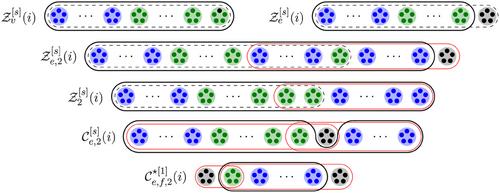Conflict-free hypergraph matchings
IF 16.4
1区 化学
Q1 CHEMISTRY, MULTIDISCIPLINARY
引用次数: 0
Abstract
A celebrated theorem of Pippenger, and Frankl and Rödl states that every almost-regular, uniform hypergraph with small maximum codegree has an almost-perfect matching. We extend this result by obtaining a conflict-free matching, where conflicts are encoded via a collection of subsets . We say that a matching is conflict-free if does not contain an element of as a subset. Under natural assumptions on , we prove that has a conflict-free, almost-perfect matching. This has many applications, one of which yields new asymptotic results for so-called ‘high-girth’ Steiner systems. Our main tool is a random greedy algorithm which we call the ‘conflict-free matching process’.

无冲突超图匹配
皮彭格(Pippenger)、弗兰克尔(Frankl)和罗德尔(Rödl)的一个著名定理指出,每一个几乎不规则的、具有较小最大度数的均匀超图 H $mathcal {H}$ 都有一个几乎完美的匹配。我们通过获得无冲突匹配来扩展这一结果,其中冲突是通过子集 C ⊆ E ( H ) $C\subseteq E(\mathcal {H})$ 的集合 C $\mathcal {C}$ 来编码的。如果 M $\mathcal {M}$ 不包含作为子集的 C $\mathcal {C}$ 的元素,我们就说匹配 M ⊆ E ( H ) $\mathcal {M}\subseteq E(\mathcal {H})$ 是无冲突的。在 C $\mathcal {C}$ 的自然假设下,我们证明 H $\mathcal {H}$ 有一个无冲突的、几乎完美的匹配。这一点有很多应用,其中之一是为所谓的 "高出生 "斯坦纳系统提供了新的渐近结果。我们的主要工具是一种随机贪婪算法,我们称之为 "无冲突匹配过程"。
本文章由计算机程序翻译,如有差异,请以英文原文为准。
求助全文
约1分钟内获得全文
求助全文
来源期刊

Accounts of Chemical Research
化学-化学综合
CiteScore
31.40
自引率
1.10%
发文量
312
审稿时长
2 months
期刊介绍:
Accounts of Chemical Research presents short, concise and critical articles offering easy-to-read overviews of basic research and applications in all areas of chemistry and biochemistry. These short reviews focus on research from the author’s own laboratory and are designed to teach the reader about a research project. In addition, Accounts of Chemical Research publishes commentaries that give an informed opinion on a current research problem. Special Issues online are devoted to a single topic of unusual activity and significance.
Accounts of Chemical Research replaces the traditional article abstract with an article "Conspectus." These entries synopsize the research affording the reader a closer look at the content and significance of an article. Through this provision of a more detailed description of the article contents, the Conspectus enhances the article's discoverability by search engines and the exposure for the research.
 求助内容:
求助内容: 应助结果提醒方式:
应助结果提醒方式:


